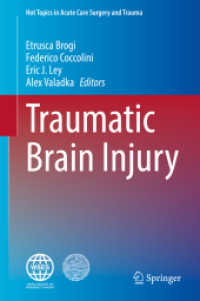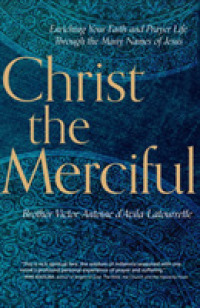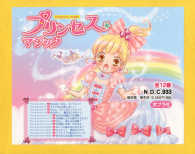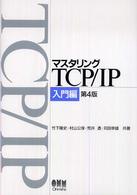- ホーム
- > 洋書
- > 英文書
- > Literary Criticism
Full Description
Originally published in 1995. In The Beautiful, Novel, and Strange, Ronald Paulson fills a lacuna in studies of aesthetics at its point of origin in England in the 1700s. He shows how aesthetics took off not only from British empiricism but also from such forms of religious heterodoxy as deism. The third earl of Shaftesbury, the founder of aesthetics, replaced the Christian God of rewards and punishments with beauty—worship of God, with a taste for a work of art. William Hogarth, reacting against Shaftesbury's "disinterestedness," replaced his Platonic abstractions with an aesthetics centered on the human body, gendered female, and based on an epistemology of curiosity, pursuit, and seduction. Paulson shows Hogarth creating, first in practice and then in theory, a middle area between the Beautiful and the Sublime by adapting Joseph Addison's category (in the Spectator) of the Novel, Uncommon, and Strange.
Paulson retrieves an aesthetics that had strong support during the eighteenth century but has been obscured both by the more dominant academic discourse of Shaftesbury (and later Sir Joshua Reynolds) and by current trends in art and literary history. Arguing that the two traditions comprised not only painterly but also literary theory and practice, Paulson explores the innovations of Henry Fielding, John Cleland, Laurence Sterne, and Oliver Goldsmith, which followed and complemented the practice in the visual arts of Hogarth and his followers.
Contents
Preface
Chapter 1. Aesthetics and Deism
Chapter 2. Shaftesburian Disinterestedness
Chapter 3. Addison's Aesthetics of the Novel
Chapter 4. The Conversation Piece: Politeness and Subversion
Chapter 5. The "Great Creation": Fielding
Chapter 6. Aesthetics and Erotics: Cleland, Fielding, and Sterne
Chapter 7. The Strange, Trivial, and Infantile: Books for Children
Chapter 8. From Novel co Strange to "Sublime"
Chapter 9. From Novel to Picturesque
Chapter 10. The Novelizing of Hogarth
Illustrations
Notes
Ackowledgments
Index








